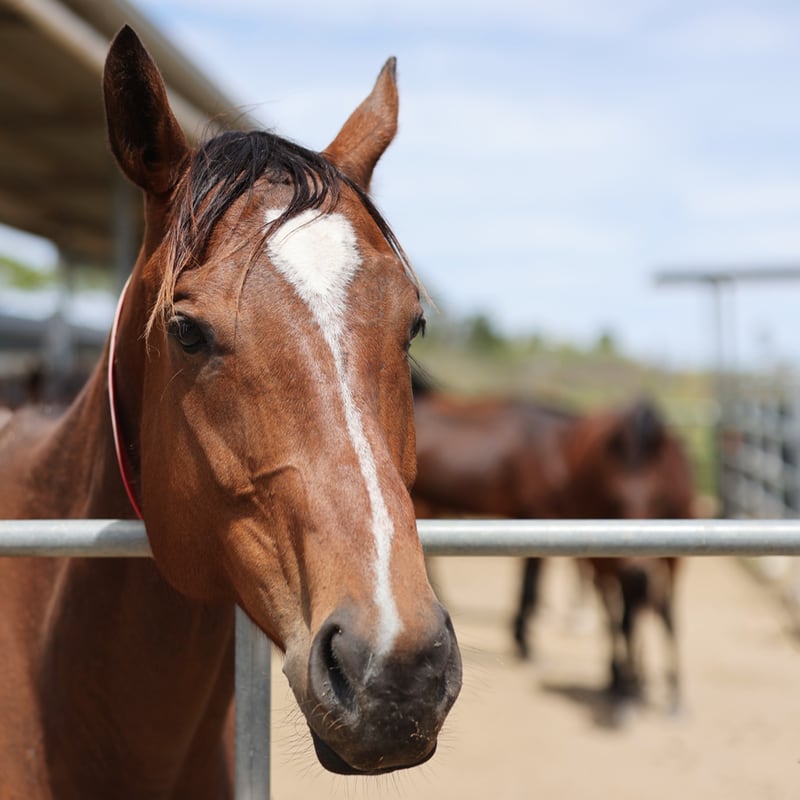If you own horses, at some stage a medical emergency is highly likely. Emergencies with your horse can be frightening and confronting. Being prepared is the key. In this and next month’s articles we are going to look at knowing your horse’s vital signs, what constitutes a first aid kit and what to do in some of the more common emergencies – colic, wounds and eye issues.
Definition Of First Aid
First aid is first line or emergency treatment for injury or disease administered before veterinary treatment is available. It does not replace veterinary treatment.
Why Are Horses So Vulnerable To Emergencies?
The Healthy Horse – What Is Normal?
Vital Signs
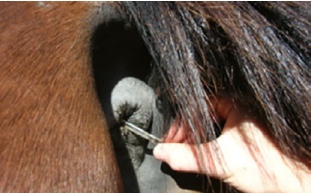
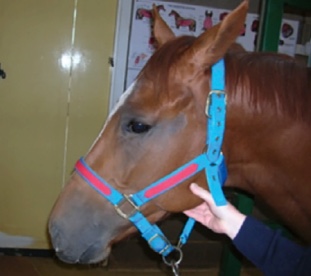
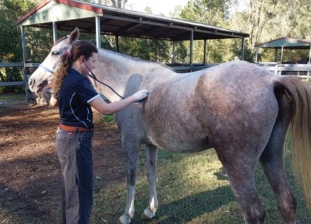
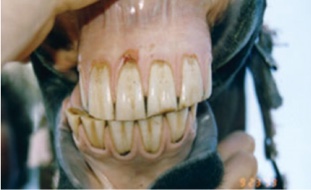
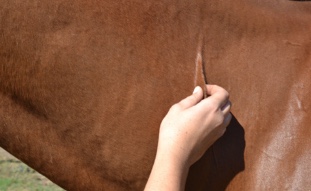
The Healthy Horse
Bright, alert and responsive (BAR)
- Healthy appearance – good body condition, glossy coat, clear eye etc
- No discharges from eyes or nose
- Stands evenly – all four feet on ground
- No lameness
- Cool limbs with no unusual swellings
- No signs of sweating at rest
- Eating and drinking normally
- Normal faeces and urine
Normal Vital Signs
Respiratory Rate
Temperature
Prepare for an emergency - have an action plan!
Be prepared for an emergency before it occurs – this will help keep you calm.
Have the following ready:
- Veterinarian’s emergency contact details
- Back up veterinarian (in case the regular one can’t be reached or can’t attend)
- Contact details of friends and neighbours (provide help whilst waiting for the vet)
- Address of the location of the horse (include key landmarks and helps the vet locate you rapidly)
- Transport or numbers of people that can transport (in case the horse needs to be transported to a hospital or veterinarian)
- First aid kits (at stables and when travelling)
Initial response to an emergency
- Try and keep calm – this will help the horse stay calm
- Get help and delegate responsibilities (Calling the vet, Getting first aid kit, Holding the horse)
- Move the horse to a safe clean place, if possible, to avoid further injury
- Contacting the veterinarian
- Speak clearly and concisely
- Don’t shout at the veterinarian. You may be in a panic, but shouting and being demanding doesn’t help, they are probably dealing with multiple cases and need to triage
- Give the following details (Full name, Phone number, Location of the horse)
- Be ready to give details of the emergency and details (Keep it concise)
- LISTEN carefully and follow the veterinarian’s instructions
- DO NOT administer medications unless instructed to do so by the veterinarian
First Aid Kit
These can be simple or elaborate and may contain different items according to your circumstance. It is a good idea to have one at the stables and one in your float for use when travelling.
The essential items are:
- Notebook and pen
- Torch and batteries or headlamp
- Pliers or wire cutters
- Thermometer
- Stethoscope
- Scissors
- Antiseptic solution (Iodine or chlorhexidine)
- Saline
- Gauze swabs
- Antiseptic ointment
- Poultice – Animalintex
- Bandage materials
- Padding – combined dressing or cotton wool
- Wound dressings – melolin
- Gauze wraps
- Elastoplast and vetwrap
- Duct tape
- Cling wrap
It is also a good idea to have PPE (personal protection equipment):
- Disinfectant/antiseptic soap
- Hand sanitisers
- Rubber boots/boot covers
- Face shield
- Eye protection/safety glasses
- Face masks/P2 respirator
- Disposable rubber gloves
What are emergencies that require prompt veterinary attention?
- Heavy bleeding that will not stop
- Obvious bone fractures
- Wounds which penetrate a joint or involve a tendon or ligament
- Wounds which penetrate the abdomen or chest cavities
- Deep wounds (including puncture wounds)
- Injuries that prevent the horse from bearing weight on a limb
- Difficulty breathing
- Choking on feed
- Collapse or loss of balance
- Severe fluid diarrhoea
- Colic with severe and ongoing pain
- Eye injuries
We will look at some of these emergencies in the next part of this article, starting here with colic.
Colic
- Gas/flatulent
- Spasmodic
- Impactions/constipation
- Parasitic
- Enteroliths
- Abscess
- Displacements – the large colon becomes displaced and in an abnormal position
- Peritonitis
- Strangulating – bowel blood supply is affected e.g., twists, lipomas, intussusceptions etc
What are the signs for colic?
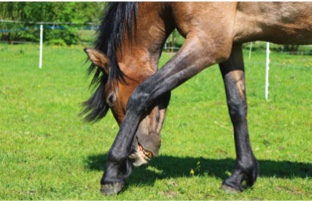

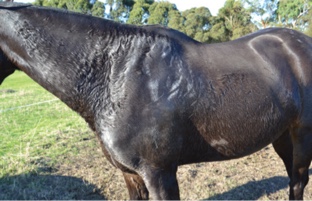
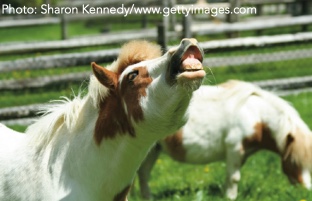
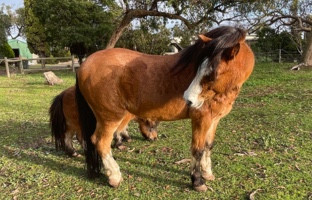
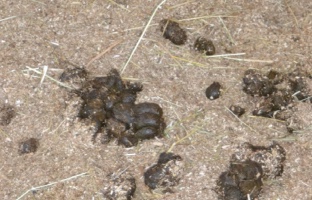
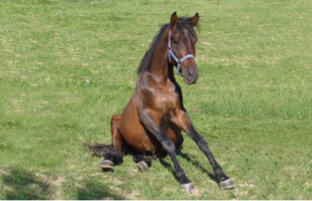
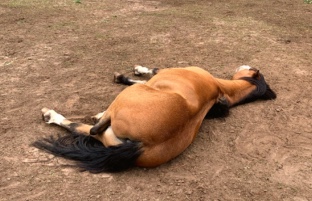

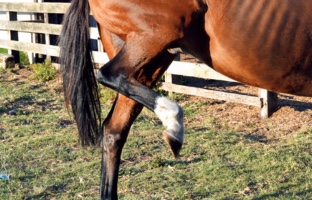
First aid for colic
- Call the vet
- Describe the signs
- Tell them how long the horse has been showing signs of colic
- Lightly walk the horse
- Only if safe to do so
- DO NOT KEEP WALKING AND WALKING!
- Walk slowly and for short periods
- Do not over exert the horse
- Experienced handler only – not a child
- If the horse is dangerous to hold, move it to a safe area where it cannot hurt itself and keep away
- No food or drink
- Do not allow the horse to eat or drink unless instructed by the veterinarian
- No medicine
- Do not administer medications unless instructed to by the veterinarian
- When you administer drugs it affects what the veterinarian is able to use
Wounds
Horses are very prone to wounds, as most horse owners will know. Why are they so prone? They are prey animals, so they have a flight response and make sudden movements when startled. They are also herd animals with a dynamic hierarchy, the habitats they live in and the sports we use them in. As a result, it is important that owners are aware of the different types of wounds that horses sustain, and be prepared to deal with them and know when to call the veterinarian.
Firstly, it is important to discuss the risk of tetanus which can be associated with wounds. Tetanus is a life-threatening condition, expensive to treat and have a poor prognosis. It is, therefore, strongly recommended to make sure that your horse is up to date with tetanus vaccinations. Your veterinarian will ask about the tetanus status if attending
to your horse with a wound. If the vaccinations are not up to date, it is recommended to give tetanus antitoxin, which provides short-term coverage but is now very expensive. The vaccination (tetanus toxoid) is readily available and not costly.

Types of wounds
Abrasions – Damage to the skin superficially by blunt trauma or shearing forces
Contusions – A blow to the skin in which blood vessels are damaged or ruptured
Haematomas – A blow to the body causing the blood vessels to rupture and blood to accumulate
Incisions – A wound created by a sharp object that has minimal associated soft tissue damage and is mainly skin
Lacerations – An irregular wound caused by the tearing of tissues. Skin and underlying tissue damage occurs
Punctures – A penetrating injury to the skin resulting in minimal skin damage and varying underlying tissue damage – a stab or hole
What type of wounds require prompt veterinary attention (emergency wounds)?
1. Wounds with severe haemorrhage
It can be very confronting and concerning to see your horse bleeding or a large pool of blood, but don’t be alarmed. Horses have a large blood volume which is 8% of their body weight, so the average 500 kg horse has 40 litres of blood.
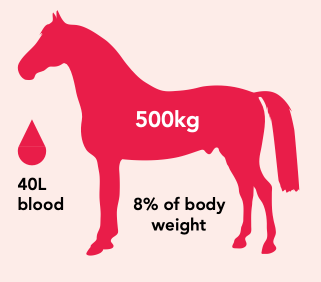
Horses can cope with a reasonable amount of blood loss – haemorrhage becomes clinically significant when over 1/3 of the body’s blood is lost rapidly – in the 500kg horse, that is 13 litres – a little blood goes a long way.
What to do
- Try and keep the horse quiet and calm – have someone hold the horse and reassure them
- Apply firm pressure to the bleeding wounds
- Bandage with padding if possible
- If bleeding goes through the padding and the bandage, add another layer
- Do not apply a tourniquet
- Note approximately how much blood has been lost
2. Puncture wounds over joints and tendon sheaths
Small puncture wounds (stabs or holes) over joints and tendon sheaths are ‘special wounds’ and require prompt attention. They look innocent compared to the huge laceration, but they can be extremely serious if they have penetrated a joint. You may see bloody, sticky, foamy fluid at the wound – this may be synovial (joint fluid).
Why are they concerning?
Joints and tendon sheaths contain synovial fluid, which is an integral part of the joint structure and essentially lubricates the surfaces. It is, however, highly nutritious to bacteria. Infection of a joint or tendon sheath can result in rapid destruction of bone or sheath structures and can be fatal. It may require aggressive veterinary attention – broad spectrum antibiotics (often intravenous), lavage or flushing of the joint/tendon sheath under a general anaesthetic and regional perfusion of antibiotics.
If you are suspicious that a joint or tendon sheath has been penetrated, please contact your veterinarian promptly – the earlier the intervention, the better the prognosis.
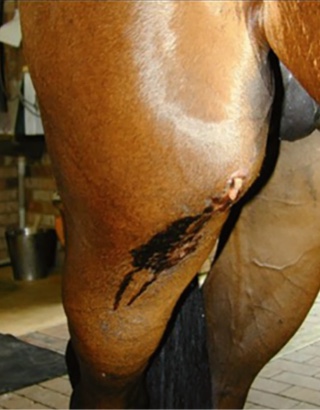
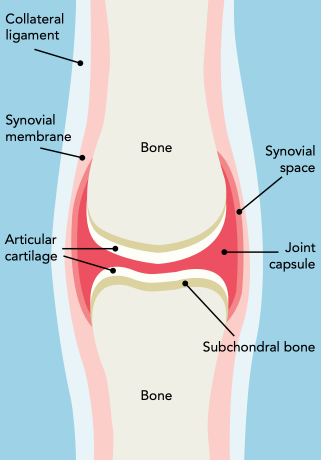
3. Deep penetrations to the sole
- Get important information below:
- What has penetrated the hoof, and how long is it
- How long has it been in the foot
- Where in the foot is it penetrating
- How deep does it go
- What direction is it pointing
- Call your veterinarian
- Photographs are useful
- Ideally, leave the object in the foot as X-raying the foot with it in helps ascertain which structures may be involved
- Prevent the object from going in further by making a padded doughnut or ring bandage around the objects
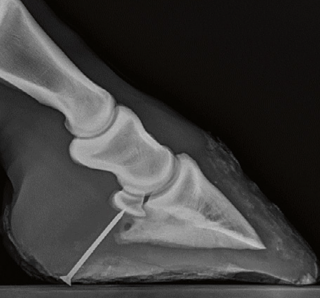
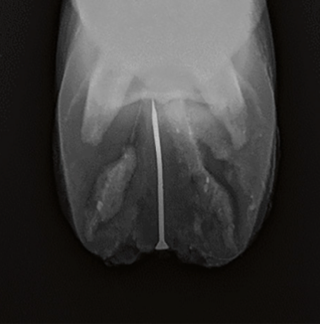
First aid for wounds
Only clean and bandage the wound if it is safe for you to do so.
Clean the wound
- Remove gross debris (mud, dirt, plant material) from the wound – note what is present
- Care with hosing with high pressure, as this can drive material deeper into the wound
- Use dilute antiseptic or saline for irrigation
- Photos are useful to keep the vet informed
Bandage the wound
This helps in several ways – it keeps the wound clean, slows bleeding, immobilises, limits swelling and prevents the wound from drying out.
- Use a non-stick pad (e.g., melolin) against the wound, followed by gauze bandage, then padding followed by Elastoplast and/or vet wrap
- Take care not to bandage too tightly – padding before pressure
Infection of a joint or tendon sheath can result in rapid destruction of bone or sheath structures and can be fatal.
Eye Emergencies
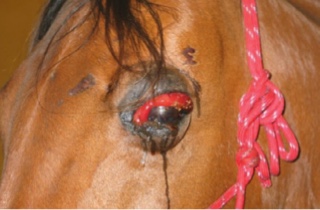
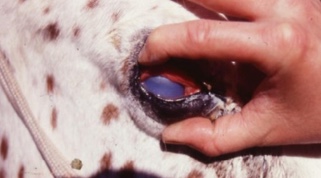
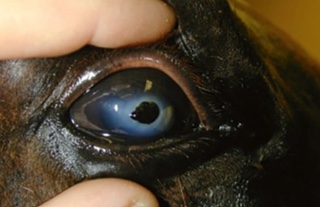
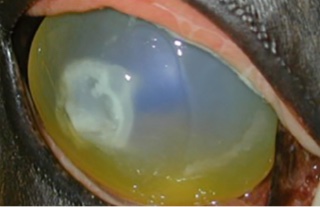
How do I recognise a serious eye problem?
- Eye is very sore/painful
- Closed eye
- Discharge from the eye
- Damaged eyelid
- Swollen lids
- Inflamed conjunctiva
- White/blue cornea
- Pus or blood in the front chamber of the eye
- Evidence of an ulcer
- Tiny closed pupil
- Blood vessels visible on the eye surface
First Aid for Eyes
- Call your vet
- Use a fly veil and/or dark area
- Don’t touch or probe the eye
- No medication (DO NOT medicate the eye or administer systemic medications without instruction from the veterinarian)
Summary
Due to the nature of the horse and the environment we keep them in, emergencies are inevitable when owning a horse.
Know your horse and what is normal, learn how to look at the vital signs. Be prepared with an action plan and a well- stocked first aid kit. BE PREPARED – prior planning and preparation prevents a poor performance!
